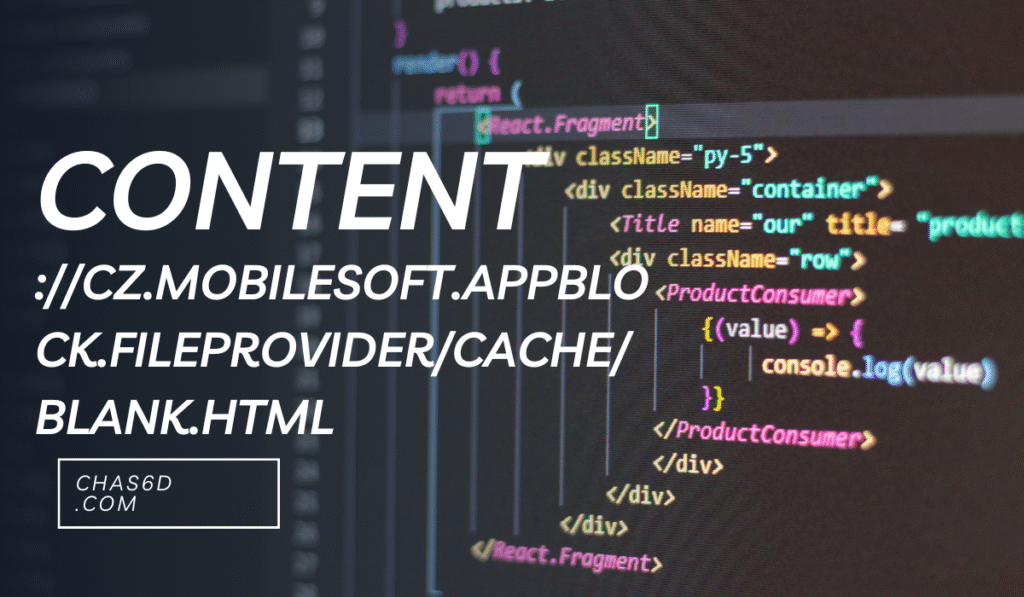Introduction to content://cz.mobilesoft.appblock.fileprovider/cache/blank.html
In the vast ecosystem of Android applications, certain internal resources remain hidden from the average user — yet they play critical roles in functionality, performance, and security. One such resource is the URI: content://cz.mobilesoft.appblock.fileprovider/cache/blank.html. This seemingly cryptic path is a clue to how modern Android apps like AppBlock manage and control user interaction with digital content.
To most users, encountering this URI may raise questions: What is it? Why is it showing up? Is it dangerous? In reality, this URI is not a bug or malware, but a core part of AppBlock’s privacy-first mechanism, and it ties into how Android handles file access and data privacy through a system called FileProvider.
Anatomy of the URI: What Each Component Means
Understanding the URI starts with breaking it down into parts:
- content:// – This prefix is used in Android to represent access via a
ContentProvider. Unlikefile://, this method of accessing files keeps them secure and abstracted from direct paths. - cz.mobilesoft.appblock.fileprovider – This is the authority for the
FileProvider. It identifies which application is offering the file. In this case, it’s the Czech-based developer MobileSoft’s AppBlock application. - /cache/blank.html – This path within the app’s private storage leads to a cached HTML file. The term “blank” suggests that it serves as an empty placeholder.
Together, content://cz.mobilesoft.appblock.fileprovider/cache/blank.html points to a placeholder HTML file stored temporarily by the AppBlock app, typically used when the app needs to redirect, suppress, or neutralize visual content.
The Purpose Behind AppBlock and Its FileProvider Structure
AppBlock is a well-regarded Android application focused on helping users maintain productivity by blocking apps, websites, and notifications during predefined schedules. Unlike intrusive control apps, AppBlock integrates with Android’s native structures to offer non-invasive yet effective content management.
To carry out its tasks without rooting the device or breaching Android security, AppBlock uses FileProvider. This allows it to share files such as HTML templates securely with the system and other apps — such as a browser or in-app webview — without exposing private data.
When AppBlock blocks a website or a content request, instead of letting it load, it may serve a blank.html page from its cache using this secure URI. That way, users don’t see a browser error, nor are they tempted to override the block. It’s a smooth, silent enforcement of user-set limits.
How content://cz.mobilesoft.appblock.fileprovider/cache/blank.html Works in Real-Time
Imagine you’ve configured AppBlock to prevent access to social media sites during work hours. When you or any background process attempts to open Facebook, instead of rendering the actual page, the app might redirect your request to content://cz.mobilesoft.appblock.fileprovider/cache/blank.html.

Here’s what happens:
- Intercept – AppBlock detects the attempt to load a blocked page.
- Redirect – Instead of processing the original URL, it substitutes a request to the cached blank HTML.
- Render – The browser or webview sees the new content URI and loads it, resulting in a blank screen.
- Maintain Flow – The application continues functioning normally without crashing or showing errors.
This is particularly useful when dealing with embedded webviews in apps like YouTube, Instagram, or browsers, where user experience must be preserved even during content restriction.
Security and Privacy Benefits of Using content:// URIs
Android made a significant shift starting with version 7.0 (Nougat) to increase app security. Direct file sharing via file:// was deprecated because it could leak private storage paths and data to other apps. Instead, developers were encouraged to use content:// URIs via FileProvider.
With content://cz.mobilesoft.appblock.fileprovider/cache/blank.html, AppBlock gains several privacy advantages:
- No Direct File Path Exposure – The actual location in device storage is hidden.
- Access Control – Only apps with permission can access the file.
- Read-Only Sharing – Files can be shared as read-only, preventing tampering.
- Scoped Access – Temporary access can be revoked easily by the host app.
All of these features make it ideal for an app like AppBlock that handles sensitive user restrictions, such as productivity schedules or digital well-being settings.
Why Use a Blank HTML File?
The decision to use a blank HTML file instead of just blocking access has technical and UX motivations. A blank HTML file like the one at content://cz.mobilesoft.appblock.fileprovider/cache/blank.html offers:
- Smooth Redirection – Avoids “Page Cannot Be Displayed” errors that could frustrate or confuse users.
- Lightweight Rendering – Being just a few lines of code, it renders instantly without CPU strain.
- Visual Neutrality – Nothingness is better than an error for maintaining user focus.
- Non-Disruptive Blocks – Especially useful in corporate or educational settings where blocking needs to feel seamless.
The cached nature of the file ensures that the app doesn’t regenerate the file each time, thereby improving performance and reducing battery drain.
How Does the Cache Come Into Play?
Android apps frequently use caching to store files that are reused across sessions. When AppBlock downloads or generates blank.html, it stores it in the cache folder for repeated access. This is where the /cache/ portion of the URI comes into play.
Advantages of caching blank.html include:
- Faster Redirection – Cached files load faster than those stored in long-term storage or downloaded fresh.
- Lower Power Use – Avoiding repeated disk operations saves battery.
- App Stability – No need to regenerate or fetch the same file over and over.
Because AppBlock operates in time-bound or event-triggered sessions, having such files ready in the cache ensures that blocks activate instantly, without lag or unexpected behavior.
Can You Remove or Modify content://cz.mobilesoft.appblock.fileprovider/cache/blank.html?
In standard, non-rooted Android environments, users cannot directly access content URIs like content://cz.mobilesoft.appblock.fileprovider/cache/blank.html. However, actions like the following can impact it:
- Clearing AppBlock Cache – Using system settings to clear the app’s cache will remove the blank.html file.
- Uninstalling AppBlock – This permanently removes the content URI and related behavior.
- Modifying AppBlock Settings – Turning off website blocking may prevent the file from being used again.
Advanced users with root access or using ADB tools may be able to inspect the internal structure of AppBlock’s file directories, but direct editing of content URIs remains out of reach due to Android’s strict sandboxing rules.
Real-World Usage Examples of content://cz.mobilesoft.appblock.fileprovider/cache/blank.html
This URI plays a quiet yet important role in different practical scenarios:

- Students blocking YouTube during study hours
- Remote workers limiting social media during meetings
- Parents creating digital rules for kids’ devices
- Individuals applying focus-mode schedules to avoid burnout
In all these use cases, content://cz.mobilesoft.appblock.fileprovider/cache/blank.html acts as a silent guardian — redirecting away from distraction, maintaining system health, and preserving user intent.
Debunking Common Myths and Misunderstandings
Despite its harmless nature, this URI can occasionally raise red flags among cautious users. Let’s clear up a few misconceptions:
- Is it a virus or spyware?
No. It’s part of AppBlock’s internal control mechanism and poses no threat. - Why does it appear in browser logs or history?
When a site is blocked, AppBlock may redirect the webview or browser to the blank page, causing it to be recorded. - Can it collect or leak data?
No. It is a static HTML file with no tracking scripts, cookies, or analytics.
Future of Android Content Management and Role of URIs Like This
As Android evolves, reliance on structured content URIs will only increase. The use of content-based access aligns with user security, GDPR compliance, and app modularity. Apps that seek to control behavior or increase productivity will continue using similar mechanisms.
In this context, content://cz.mobilesoft.appblock.fileprovider/cache/blank.html is a model of how future applications may abstract sensitive operations, minimize impact, and maintain a user-first design.
Final Thoughts
What might seem like a random, cryptic URI — content://cz.mobilesoft.appblock.fileprovider/cache/blank.html — is actually a key part of a sophisticated ecosystem designed to empower users to regain control over their digital habits. Its structure, function, and secure implementation reveal the quiet efficiency of AppBlock and Android’s content management frameworks.
Whether you’re a developer trying to build a similar tool, a user aiming for more productive days, or a curious tech enthusiast, understanding such behind-the-scenes elements opens the door to deeper appreciation of your device’s intelligence and subtlety.
For more visit website: chas6d


